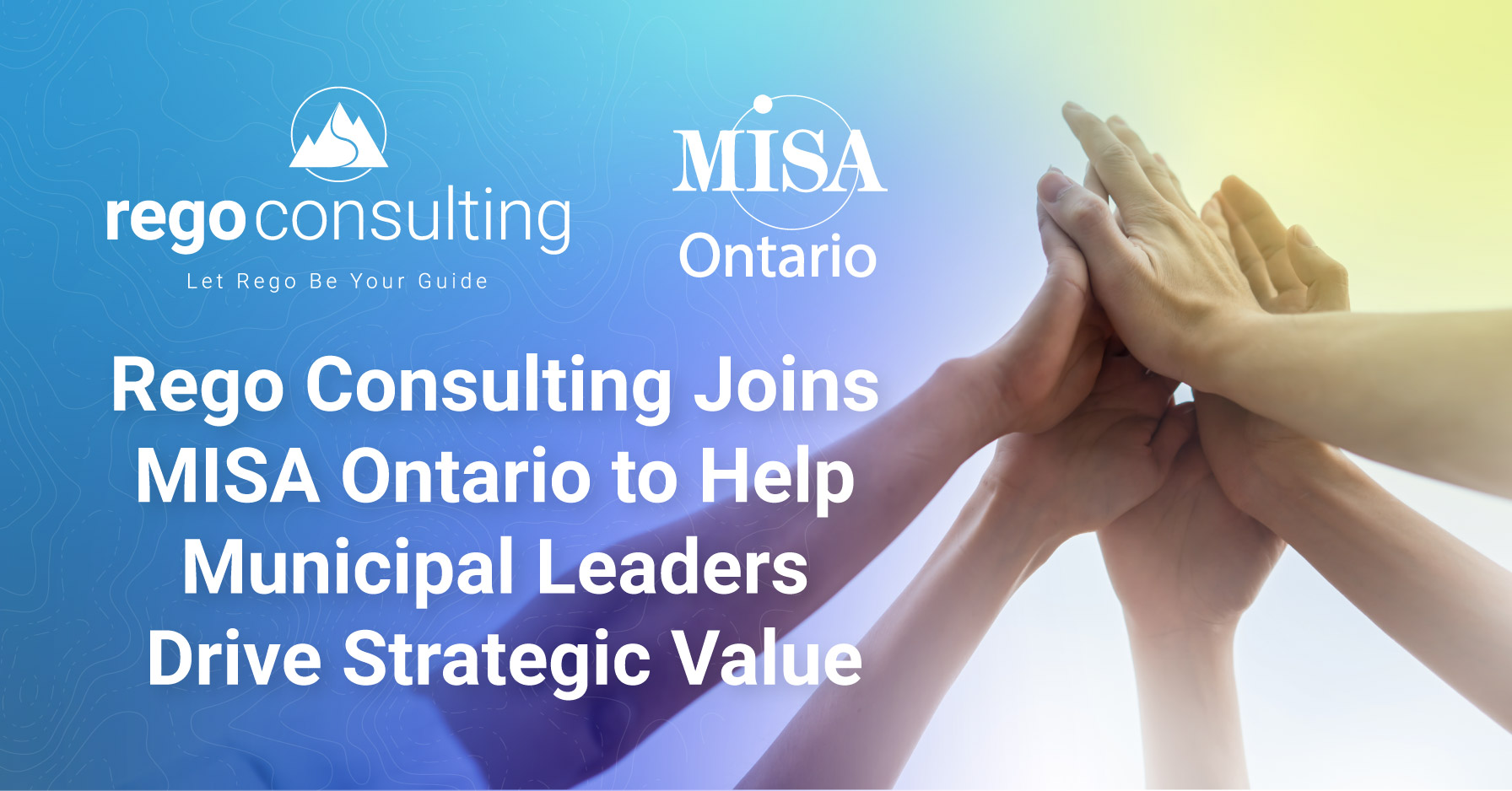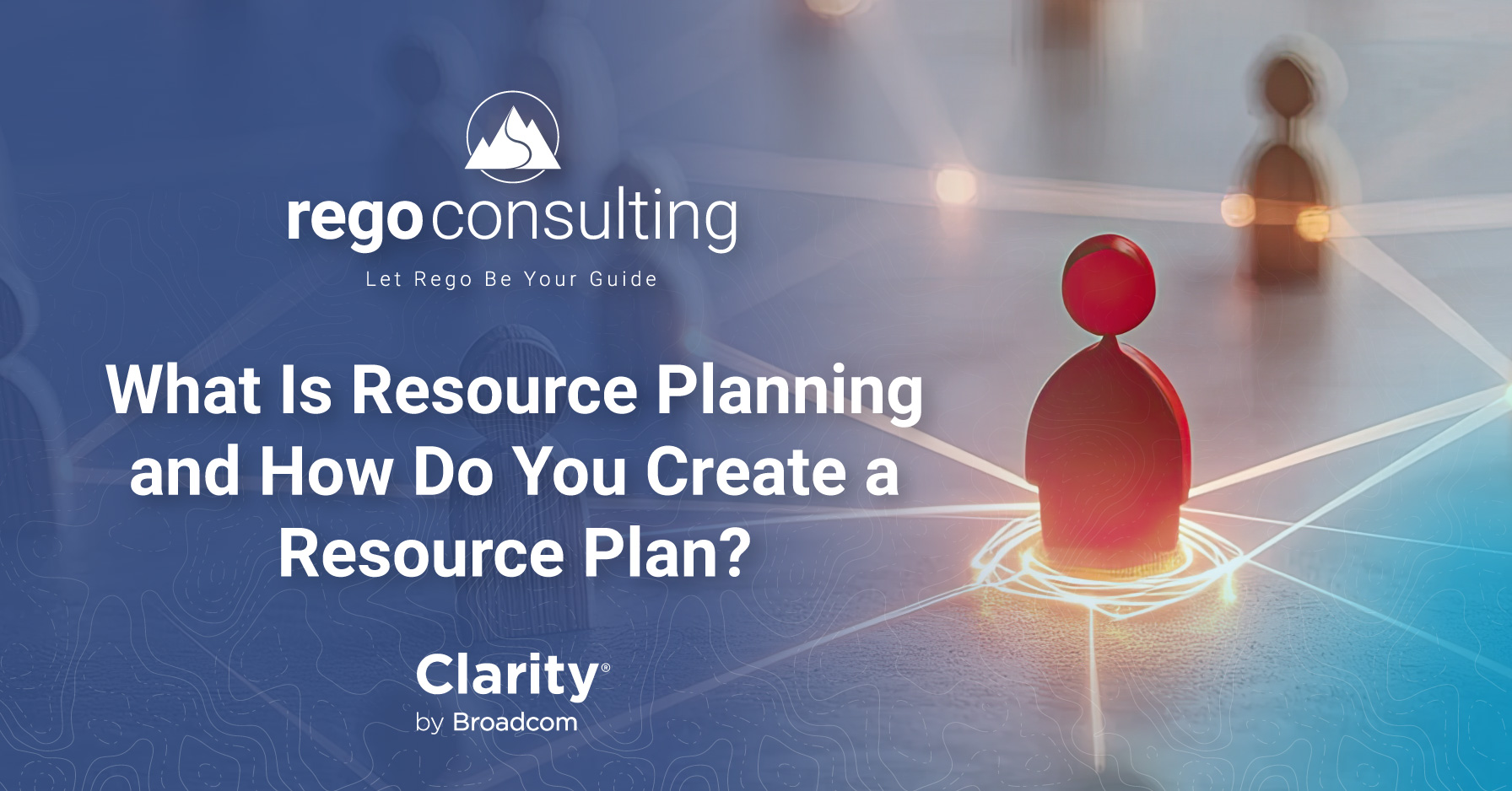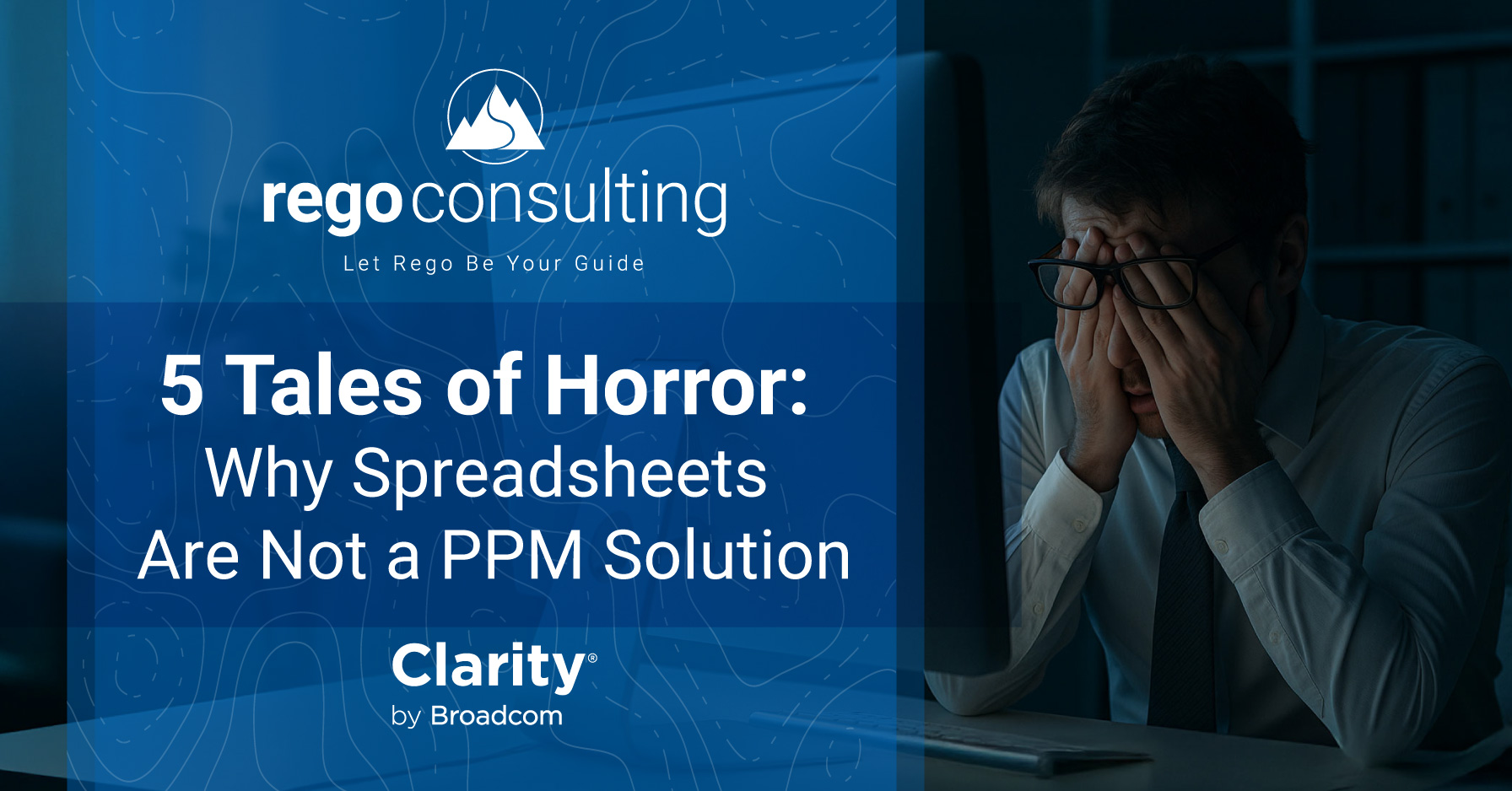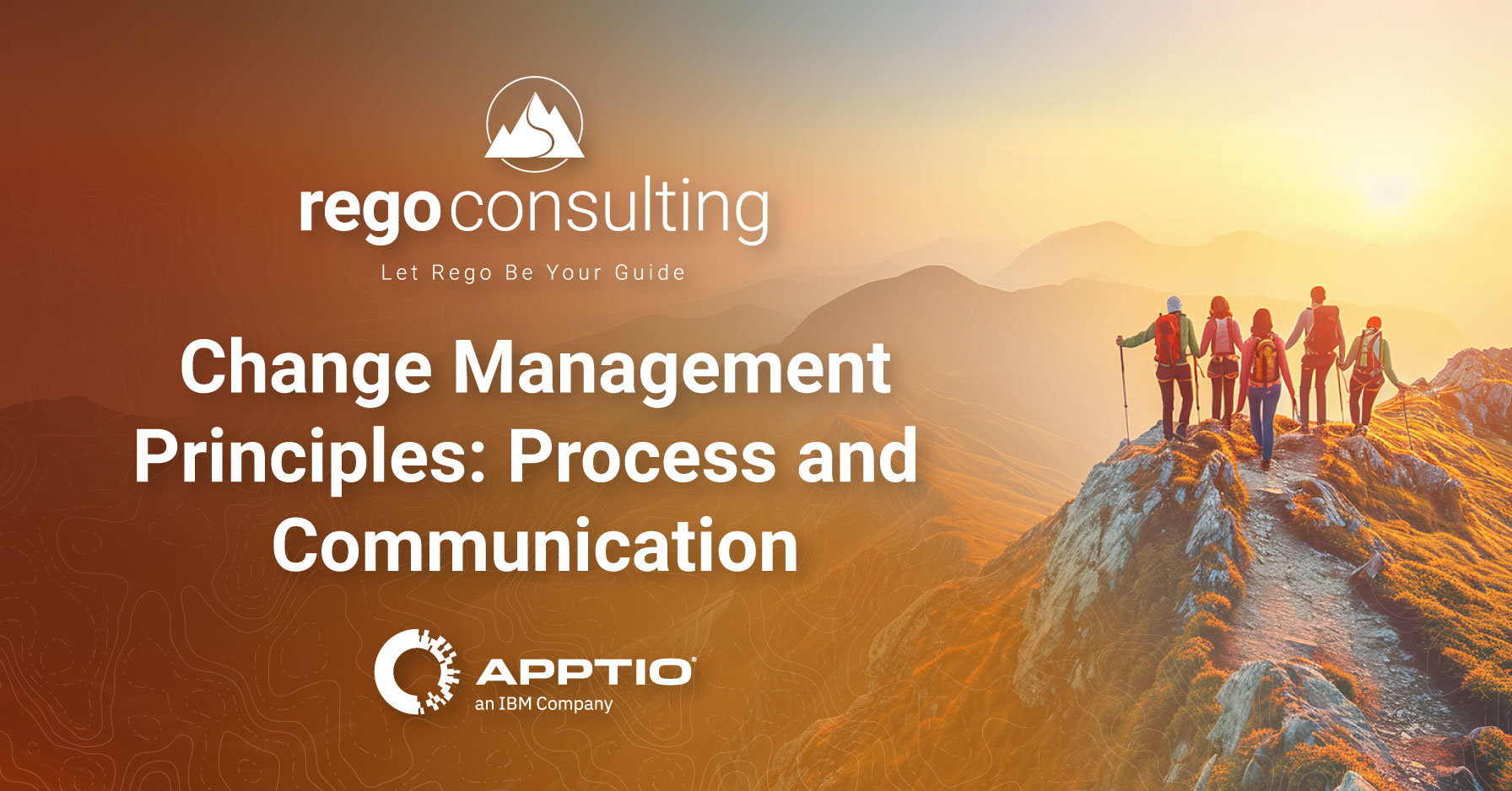
Our Agile Master Class series just covered Agile Roadmaps in a fascinating webinar hosted by Rego and experts from Rally Software® and CA Technologies, a Broadcom Company. All three Master Classes are now available on demand. We’ll cover the highlights below. Watch the on demand webinar for more details.
Roadmapping is a critical piece of your Agile-minded enterprise. In fact, it’s so important that we’ve dedicated thousands of hours to helping companies develop dynamic roadmap strategies. If you’d like to see the free content Rego provides, visit our website to see Clarity PPM white papers, webinars, blogs, and free training courses.
How Do Products, Projects, and Roadmaps Fit Together?
A roadmap in Clarity PPM is a strategic tool available in the Modern UX that helps us visualize, communicate, and describe a product that will be built. Roadmaps capture the vision of how a product will be developed and act as a guide throughout the process. Roadmaps give stakeholders access to our plans, so they can align themselves to organizational goals.
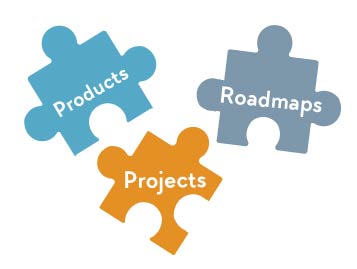 Some companies think roadmaps simply allow project planning. Although we agree that projects and project managers are extremely important, we recommend adopting a product development mindset to see maximum impact and value.
Some companies think roadmaps simply allow project planning. Although we agree that projects and project managers are extremely important, we recommend adopting a product development mindset to see maximum impact and value.
We always want to know, “What is the product?” To put it simply, a product can be anything providing value that you invest in, even if it’s not a tangible deliverable.
Have you ever used a flight check-in app at the airport? It supports multiple functions—including check-in, flight notifications, seating changes, baggage, and more. Although it might seem like the product for a major airline is the transportation itself, the app is not just a project or supporting technology. It’s a product, too. We like to consider how much we invest these kinds of technologies, so we can begin to see how many products should actually be considered in a roadmap.
Let’s Start Roadmapping
To get going, we want to ask ourselves these questions.
- Are the key stakeholders at our organization aligned?
- Is our organization still planning and tracking projects vs. products?
- Have the right roles and responsibilities been established?
- Do we have product owners and managers?
- Are there feedback loops in our process?
- Have the correct economic metrics been introduced?
Even the biggest companies in the world are not safe from the shift to business agility. To drive the point home, in the 1950s, an average company lifespan was 61 years. In 2019, it’s only 18.
The Kodak Story
 In 1975, Kodak developed the world’s first digital camera. Executives at the company were reluctant to accept it. Their rationale was that introducing a digital camera would negatively impact film sales. Unfortunately, Kodak lost this incredible opportunity to lead the world in digital camera innovation, and in 2012 they declared bankruptcy.
In 1975, Kodak developed the world’s first digital camera. Executives at the company were reluctant to accept it. Their rationale was that introducing a digital camera would negatively impact film sales. Unfortunately, Kodak lost this incredible opportunity to lead the world in digital camera innovation, and in 2012 they declared bankruptcy.
We know that hindsight is always 20/20, but companies still cling to anti-change behaviors. We have to be the ones who are open to change. It’s never about the tool. The biggest hurdle in embracing agility is mindset.
Adopting Agile leadership gives us the ability to pivot on spur-of-the-moment ideas that could yield unbelievable profits.
Products are a sustained asset, and projects are temporary. A product could last several years. It delivers value that can be articulated in business terms and should receive explicit funding. Roadmaps are one way to support the business case for that investment.
There’s a Method

Being Agile means course correcting along the way.
We consider the outcome we want to achieve at a strategic level. What are we really driving towards, and how is that captured? People tend to focus on tangible assets when thinking about products, but the digital revolution means that traditional definitions have changed. Products can be a data analytics tool. Products can even be assets to your company or to other products.
Funding and staffing are two of the looming questions that we’ll have to work through. We’ve had clients who shifted to simply funding capacity. If a product is a sustainable asset, we should continue to invest in it as long as it makes sense to do so. People are often afraid they’ll get it wrong, so they stay stuck in the same behaviors for a long time. It’s okay to not be sure about everything.
Being truly Agile is about accepting that the world isn’t perfect, and things don’t always go according to plan. We’ll have to course-correct along the way, just like everyone else. And it does require big change. But these things become a part of our strategic plan, and we adapt (and eventually enjoy) our newfound flexibility.
Embrace the change, and Agile can become second-nature.
Using Roadmaps in Clarity PPM
Roadmaps in Clarity PPM are not a list of features. They revolve around strategy. Rego has investment tags that help companies who want to fund epics (elements within a roadmap), by providing the cost and benefit information per epic.
Clarity PPM can be used for a variety of annual and continuous planning initiatives, allowing us to define strategies depending on our alignment.
Some companies choose to follow an annual planning approach. Read more about the pros of continuous planning over annual planning here. As far as funding is concerned, nothing has to change when we fund teams in our annual budget. This allows flexibility, so that our strategy can adapt throughout the year while our resources retain the ability to support business agility with product development.
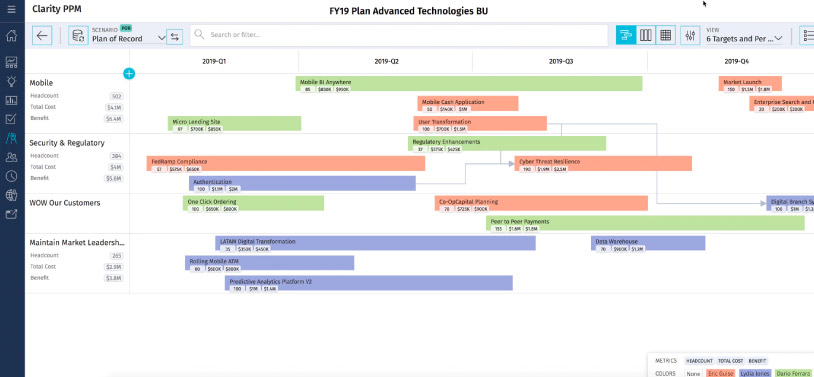
Sample roadmap in Clarity PPM
Frequently, we see companies forced into a level of detail that isn’t useful for adapting to change. Budgeting shouldn’t be irrelevant by the time it’s introduced. Think of it as an educated guess, instead of a strict plan we made based on predicted opportunities.
Clarity PPM and Rally Software® Integration Options
Clarity PPM can helps us align roadmaps to multiple corporate strategies. We can use the tool to compare strategies and see insights into the benefits and viability of each strategy. Roadmapping allows us to combine data in grids, boards, and timelines. When we use investment roadmaps, fiscal values can be displayed by quarter. Executives can easily see the value of each scenario.
We’ve all been in a situation where executives want to do something that would disrupt the current plan and require a large time-investment to demonstrate impact. With Clarity PPM, all we need to do is combine scenarios. We can show executives a holistic view of all options without digressing into personal opinions.
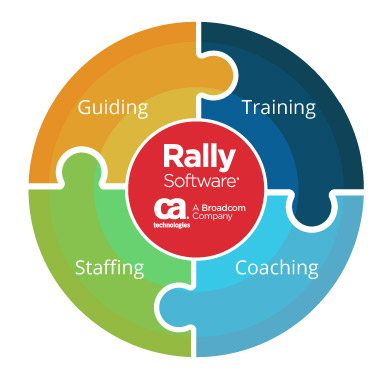
Rally Software® can be used alongside Clarity PPM for a centralized Agile integration. The capacity planning tool in Rally Software® offers a high-level roadmap feature for senior architects and engineering managers. It’s an effective way to break down work artifacts and access powerful data at a detailed level.
Agile Release Planning is another feature we utilize with Clarity PPM data. CA Technologies uses Rally Software® to drive the creation of scenarios that illustrate work and capacity, and Clarity PPM data can use capacity planning to delegate capacity per quarter in Rally Software®.
We can also connect to execution data and create a feedback loop to fuel processes. Everything we need to hold high-level conversations is included in the Rally Software®-Clarity PPM integration. This software duo allows us to make decisions based on opportunity. We like to think of it as a self-building project plan with highly interactive options. Rego would be glad to help you establish this integration. Feel free to reach out to us if you’re interested in discovering the potential of roadmapping in Clarity PPM with Rally Software®.
We have one final tip. All of this may seem intimidating, but it doesn’t need to be. We like to imagine the customer perspective. What would a product look like to them? It’s okay if it’s obvious. This clearly defined product is where we start. When we play around with building a roadmap for that product, we can quickly see the benefits and potential of Agile roadmapping.
Special thanks to our talented panel of presenters.
Kurt Steinle leads Product Management for Clarity PPM and has been the driver for our Modern UX development. He’s been in Clarity PPM leadership roles for over twenty years.
Aaron Rusty Lloyd is Broadcom’s Director of Sales Engineering for Rally Software®. A decisive leader who builds teams in high-volume environments, Rusty drives Agile operational results.
Rob Greca is Rego’s Managing Direct of Agile Services. He’s responsible for the three Clarity PPM Agile Master Classes we’re happy to share with you here.
Learn from Rego
Rego’s 200 expert guides have helped more than 600,000 users master financials, resource management, roadmapping, and more in Clarity PPM and Rally Software®. Contact us for assistance any time. Sign up for a free health assessment or demo today.

